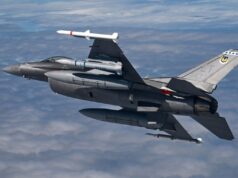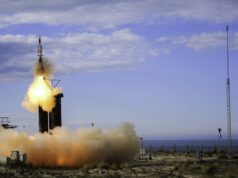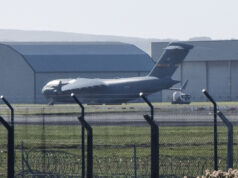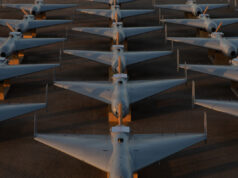The United States, United Kingdom, France and Finland will take part in Atlantic Trident 25, a multinational air combat exercise set to run from 16 to 27 June 2025 in Finnish airspace.
This year’s iteration marks the first time the exercise will be hosted by Finland, expanding the event beyond its traditional trilateral format involving the United States, the United Kingdom and France.
The exercise, led by U.S. Air Forces in Europe–Air Forces Africa (USAFE-AFAFRICA), is focused on strengthening integration between fourth- and fifth-generation aircraft while enhancing tactical readiness and interoperability among NATO and allied air forces.
Participating aircraft will include:
- Finnish Air Force F/A-18 Hornets
- U.S. Air Force F-35A Lightning IIs, F-15E Strike Eagles, and KC-135 Stratotankers
- French Air and Space Force Rafales, E-3F AWACS, A330 MRTT, and A400M transport aircraft
- Royal Air Force Eurofighter Typhoons
Atlantic Trident is described by USAFE-AFAFRICA as a tactical-level training event that enables forces to operate in complex and contested environments. It also allows for the forward deployment of U.S. combat power in close coordination with allied nations.
According to the U.S. Air Force, the exercise is part of a broader effort to re-establish credible deterrence, reinforce combat integration, and build trust among partner nations.
“These exercises are essential to enhancing tactical proficiency, building trust, and demonstrating the U.S. military’s ability in high-end, multi-nation operations,” a statement from USAFE-AFAFRICA Public Affairs said.
The event aims to improve joint capability, allowing forces to test modern platforms and air combat tactics in a realistic operational setting.
The context
Sweden and Finland’s recent accession to NATO marks one of the most significant strategic shifts in European security since the end of the Cold War. Historically neutral and militarily non-aligned, both nations reassessed their positions in response to Russia’s full-scale invasion of Ukraine in 2022. Finland joined NATO in April 2023, followed by Sweden in March 2024, ending decades of non-alignment and signalling a profound transformation in Nordic defence policy. Their decisions were not taken lightly, but were widely supported by their respective populations and political parties, driven by concerns over regional security and a desire for collective defence guarantees under Article 5 of the North Atlantic Treaty.
Finland’s membership carries immediate operational consequences. With its 1,300-kilometre land border with Russia, Finland significantly extends NATO’s direct frontier with the Russian Federation, altering the strategic calculus for both sides. The Finnish Defence Forces, long maintained at high readiness due to proximity to Russia, bring a capable, well-trained military into the alliance, with substantial reserves and interoperable equipment. Sweden, for its part, strengthens NATO’s access to the Baltic Sea and the Arctic, bringing advanced air and naval capabilities including its Gripen fighters and Gotland-class submarines, as well as key geostrategic territory, notably the island of Gotland.
Their entry also enhances NATO’s cohesion and operational flexibility in Northern Europe. For decades, the alliance’s plans for the defence of the Baltic States were hampered by geography and the limited ability to project force through or around non-aligned Nordic countries. With Sweden and Finland inside the alliance, NATO can now plan for integrated defence across the High North and Baltic region. This bolsters deterrence against Russian aggression while allowing for coordinated exercises, infrastructure investment, and rapid troop movements across Scandinavian territory in a crisis.
For NATO, the challenge now lies in fully integrating Finland and Sweden into command structures and planning cycles, without undermining the delicate balance of deterrence and diplomacy that underpins European stability.













Great to show strength & resolve to focus Putins mind when he’s trying to terminate UKR.